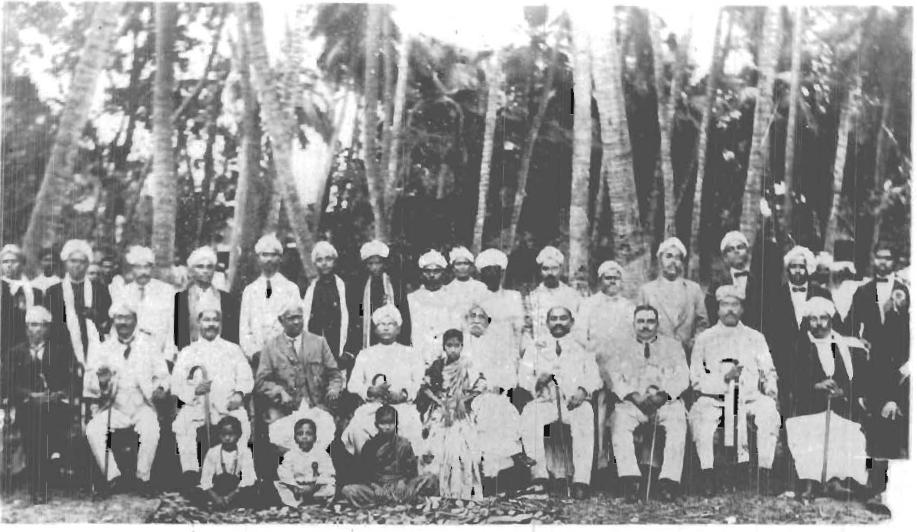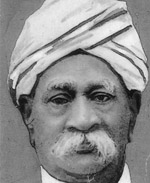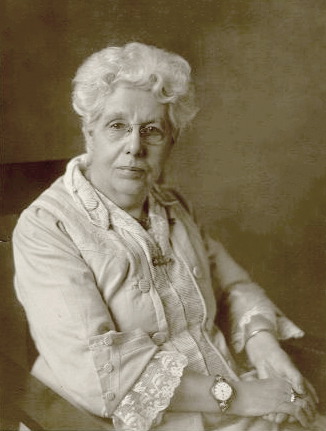|
Periyar
Erode Venkatappa Ramasamy (17 September 187924 December 1973), commonly known as Periyar, was an Indian social activist and politician. He was the organizer of the Self-Respect Movement and Dravidar Kazhagam and is considered the architect of Dravidian politics. Periyar joined the Indian National Congress in 1919 and participated in the Vaikom Satyagraha, during which he was imprisoned twice. He resigned from the Congress in 1925, believing that they only served the interests of Brahmins. From 1929 to 1932, he toured British Malaya, Europe and the Soviet Union which later influenced his Self-Respect Movement in favor of caste equality. In 1939, he became the head of the Justice Party, which he transformed into a social organisation named ''Dravidar Kazhagam'' in 1944. The party later split with one group led by C. N. Annadurai forming the Dravida Munnetra Kazhagam (DMK) in 1949. While continuing the Self-Respect Movement, he advocated for an independent Dravida Nadu (lan ... [...More Info...] [...Related Items...] OR: [Wikipedia] [Google] [Baidu] |
Justice Party (India)
The Justice Party, officially the South Indian Liberal Federation, was a political party in the Madras Presidency of British Raj (current Tamil Nadu, India) It was established on 20 November 1916 in Victoria Public Hall in Madras by Dr C. Natesa Mudaliar and co-founded by T. M. Nair, P. Theagaraya Chetty and Alamelu Mangai Thayarammal as a result of a series of non-Brahmin conferences and meetings in the presidency. Communal division between Brahmins and non-Brahmins began in the presidency during the late-19th and early-20th century, mainly due to caste in India, caste prejudices and disproportionate Brahminical representation in government jobs. The Justice Party's foundation marked the culmination of several efforts to establish an organisation to represent the non-Brahmins in Madras and is seen as the start of the Dravidian Movement. During its early years, the party was involved in petitioning the imperial administrative bodies and Government officials demanding more represe ... [...More Info...] [...Related Items...] OR: [Wikipedia] [Google] [Baidu] |
Self-Respect Movement
The Self-Respect Movement is a popular human rights movement originating in South India aimed at achieving social equality for those oppressed by the Indian caste system, advocating for lower castes to develop self-respect. It was founded in 1925 by S. Ramanathan, who invited E. V. Ramasamy (also known as Periyar) to head the India against Brahminism movement in Tamil Nadu. The movement was extremely influential not only in Tamil Nadu, but also overseas in countries with large Tamil populations, such as Sri Lanka, Burma, and Singapore. Among Singapore Indians, groups like the Tamil Reform Association, and leaders such as Thamizhavel G. Sarangapani were prominent in promoting the principles of the Self-Respect Movement among the local Tamil population through schools and publications. A number of political parties in Tamil Nadu, such as Dravida Munnetra Kazhagam (DMK) and All India Anna Dravida Munnetra Kazhagam (AIADMK) owe their origins to the Self-Respect Movement; the ... [...More Info...] [...Related Items...] OR: [Wikipedia] [Google] [Baidu] |
Dravidar Kazhagam
Dravidar Kazhagam is a social movement founded by E. V. Ramasamy, 'Periyar' E. V. Ramasamy. Its original goals were to eradicate the ills of the existing caste and class system including untouchability and on a grander scale to obtain a "Dravida Nadu" (Dravidian Nation) from the Madras Presidency. Dravidar Kazhagam would in turn give birth to many other political parties, including Dravida Munnetra Kazhagam and later the All India Anna Dravida Munnetra Kazhagam. History Founded by Periyar E. V. Ramasamy, the roots of the Dravidar Kazhagam lie in the Self-Respect Movement and Justice Party (India), Justice Party. Periyar formed the Self-Respect Movement in 1925, breaking in the process from the Indian National Congress party, of which he had been a member until then. The Justice Party (India), Justice Party, formed in 1917, also claimed to promote similar interests. The two entities merged in 1938 under Periyar's leadership. The name was changed to Dravidar Kazhagam in 1944. ... [...More Info...] [...Related Items...] OR: [Wikipedia] [Google] [Baidu] |
Dravida Munnetra Kazhagam
The Dravida Munnetra Kazhagam (; ; DMK) is an Indian political party based in the state of Tamil Nadu, where it is currently the ruling party, and the union territory of Puducherry (union territory), Puducherry, where it is currently the main opposition. The DMK was founded on 17 September 1949 by C. N. Annadurai (Anna) as a breakaway faction from the Dravidar Kazhagam headed by Periyar. DMK was headed by Annadurai as the general secretary from 1949 until his death on 4 February 1969. He also served as the chief minister of Tamil Nadu from 1967 to 1969. Under Annadurai, in 1967, DMK became the first party, other than the Indian National Congress, to win the state-level elections with a clear majority on its own in any state in India. M. Karunanidhi (Kalaignar) followed Annadurai as the first president of the party from 1969 until his death on 7 August 2018. He also served as the Chief Minister for five non-consecutive terms, in two of which he was dismissed by the Union governm ... [...More Info...] [...Related Items...] OR: [Wikipedia] [Google] [Baidu] |
Dravidian Politics
Dravidian parties include an array of regional political parties in the state of Tamil Nadu, India, which trace their origins and ideologies either directly or indirectly to the Justice Party and the Dravidian movement of C. Natesanar and Periyar E. V. Ramasamy. The Dravidian movement was based on the linguistic divide in India, where most of the Northern Indian, Eastern Indian and Western Indian languages are classified as Indo-Aryan, whereas the South Indian languages are classified as Dravidian. Dravidian politics has developed by associating itself to the Dravidian community. The original goal of Dravidian politics was to achieve social equality, but it later championed the cause of ending the domination of North India over the politics and economy of the South Indian province known as Madras Presidency. Most Dravidian parties are offshoots of Dravidar Kazhagam (DK). There are also a few other parties in Tamil Nadu that did not arise from DK directly. Nevertheless ... [...More Info...] [...Related Items...] OR: [Wikipedia] [Google] [Baidu] |
Madras Presidency
The Madras Presidency or Madras Province, officially called the Presidency of Fort St. George until 1937, was an administrative subdivision (province) of British India and later the Dominion of India. At its greatest extent, the presidency included most of southern India, including all of present-day Andhra Pradesh, almost all of Tamil Nadu and parts of Kerala, Karnataka, Odisha and Telangana in the modern day. The city of Madras was the winter capital of the presidency and Ooty (Udagamandalam) was the summer capital. The Madras State was neighboured by the Kingdom of Mysore to the northwest, the Kingdom of Cochin and Kingdom of Travancore to the southwest, the Kingdom of Pudukkottai in the center, and the Hyderabad State to the north. Some parts of the presidency were also flanked by Bombay State ( Konkan Districts) and Central States (modern Madhya Pradesh). In 1639, the English East India Company purchased the village of Madraspatnam and one year later it establis ... [...More Info...] [...Related Items...] OR: [Wikipedia] [Google] [Baidu] |
Dravida Nadu
The Dravida Nadu movement was a separatist movement seeking to create a homeland for the Dravidians by establishing a sovereign state in the predominantly Dravidian-speaking southern regions of British India consisting of Telangana, Andhra Pradesh, Tamil Nadu, Karnataka and Kerala. It was started by the Justice Party under Periyar and later the Dravida Munnetra Kazhagam (DMK) led by C. N. Annadurai. Initially, the demand of Dravida Nadu proponents was limited to Tamil-speaking regions, but it was later expanded to include other Indian states with a majority of Dravidian-speakers (Andhra Pradesh, Telangana, Kerala and Karnataka). Some of the proponents also included parts of Ceylon (Sri Lanka), Orissa and Maharashtra. Other names for the proposed sovereign state included "South India", "Deccan Federation" and "Dakshinapath". The movement for Dravida Nadu was at its height from the 1940s to 1960s, but due to fears of Tamil hegemony, it failed to find any support outside Tam ... [...More Info...] [...Related Items...] OR: [Wikipedia] [Google] [Baidu] |
Nagammai
Erode Venkatappa Ramasamy Nagammai (1885 – 11 May 1933) was an Indian social activist and women's rights activist. She was known for her participation in the Temperance movement in India and the Vaikom Satyagraha. She was the first wife of Periyar E. V. Ramasamy who headed the Self-Respect Movement. Early life Nagammai was born in 1885 to Rangasamy and Ponnuthai in Thathampatti, Salem, Madras Presidency. She had no formal education. She was the cousin of Ramasamy and married him at the age of thirteen in 1898. The couple had a daughter who died when she was five months old. Activities In 1919, Ramasamy joined the Indian National Congress. Nagammai actively supported his political career. When Mahatma Gandhi called for the Temperance movement, she organised the women to picket the toddy shops in Erode. As the movement turned violent in some parts of the country, the Congress leaders requested Gandhi to stop the agitations. Gandhi replied that the matter was "not in h ... [...More Info...] [...Related Items...] OR: [Wikipedia] [Google] [Baidu] |
South India
South India, also known as Southern India or Peninsular India, is the southern part of the Deccan Peninsula in India encompassing the states of Andhra Pradesh, Karnataka, Kerala, Tamil Nadu and Telangana as well as the union territories of Lakshadweep and Puducherry, occupying 19.31% of India's area () and 20% of India's population. It is bound by the Bay of Bengal in the east, the Arabian Sea in the west and the Indian Ocean in the south. The geography of the region is diverse, with two mountain ranges, the Western and Eastern Ghats, bordering the plateau heartland. The Godavari, Krishna, Kaveri, Penna, Tungabhadra and Vaigai rivers are important non-perennial sources of water. Chennai, Bengaluru, Hyderabad, Coimbatore and Kochi are the largest urban areas in the region. The majority of the people in South India speak at least one of the four major Dravidian languages: Telugu, Tamil, Kannada and Malayalam. During its history, a number of dynastic kingdoms ruled ove ... [...More Info...] [...Related Items...] OR: [Wikipedia] [Google] [Baidu] |
Erode
Erode (; īrōṭu), is a city in the Indian state of Tamil Nadu. It is located on the banks of the Kaveri river and is surrounded by the Western Ghats. Erode is the seventh largest urban agglomeration in Tamil Nadu. It is the administrative capital of Erode district and is administered by the Erode Municipal Corporation which was established in 2008. The region was ruled by the Cheras during the Sangam period between the 1st and the 4th centuries CE. The medieval Cholas conquered the region in the 10th century CE. The region was ruled by Vijayanagara Empire in the 15th century followed by the Nayaks who introduced the Palayakkarar system. In the later part of the 18th century, the it came under the Kingdom of Mysore and following the Anglo-Mysore Wars, the British East India Company annexed it to the Madras Presidency in 1799. The region played a prominent role in the second Poligar War (1801) when it was the area of operations of Dheeran Chinnamalai. Post Indian ... [...More Info...] [...Related Items...] OR: [Wikipedia] [Google] [Baidu] |
Balija
The Balija are a Telugu-speaking mercantile community primarily living in the Indian states of Andhra Pradesh, Tamil Nadu, Karnataka and in smaller numbers in Telangana and Kerala. In Tamil Nadu, they are known as Gavarais. Etymology Variations of the name in use in the medieval era were ''Balanja'', ''Bananja'', ''Bananju'', ''Banajiga'' and ''Banijiga'', with probable cognates ''Balijiga'', ''Valanjiyar'', ''Balanji'', ''Bananji'' and derivatives such as ''Baliga'', all of which are said to be derived from the Sanskrit term ''Vanik'' or ''Vanij'', for trader. Another version for etymology states that Balija is derived from the Sanskrit word ''Bali'', a sacrifice made during ' Yagna' ritual and ''Ja'' meaning born. Therefore, Balija means 'born from sacrifice'. Origins Beginning in the 9th century, references are found in inscriptions throughout the Kannada and Tamil areas to a trading network, which is sometimes referred to as a guild, called the Five Hundred Lords ... [...More Info...] [...Related Items...] OR: [Wikipedia] [Google] [Baidu] |
Vellore
Vellore ( ), also spelled Velur, is a sprawling city and the administrative headquarters of Vellore district in the Indian state of Tamil Nadu. It is located on the banks of the Palar River and surrounded by the Javadi Hills in the northeastern part of Tamil Nadu and is separated into four zones that are further subdivided into 60 wards, covering an area of 153.14 km2 and housing a population of 315,128 as reported by the 2011 census. The Vellore city along with its sub urban areas is spread across approximately 200 km² with a population of 484,690 as of 2011. It is located about west of Chennai, and about east of Bangalore. Vellore is located on the Mumbai–Chennai arm of the Golden Quadrilateral. Vellore is governed under a mayor and the Vellore Municipal Corporation. It is a part of both the Vellore (Lok Sabha constituency), Lok Sabha and Vellore (State Assembly Constituency), state assembly constituencies of Vellore. Vellore is the home to the Christian Medic ... [...More Info...] [...Related Items...] OR: [Wikipedia] [Google] [Baidu] |





